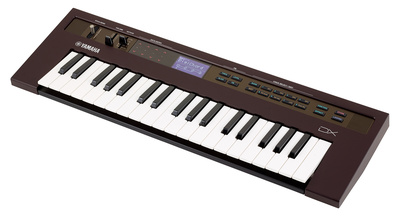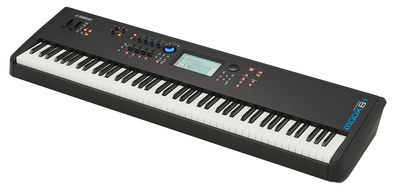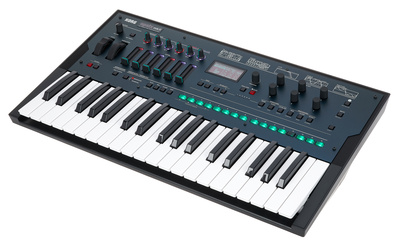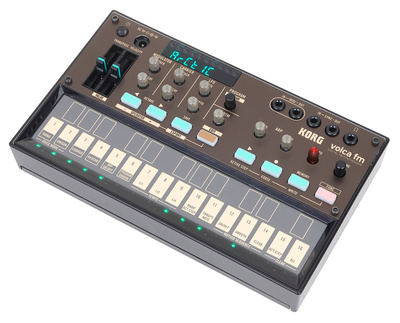What Is FM Synthesis?
FM synthesis was developed in 1967 by Dr. John Chowning at Stanford University in California. Recognizing its potential, Yamaha quickly acquired the patent from Stanford. The first prototype was called the Programmable Algorithm Music Synthesizer.
In 1981, Yamaha introduced the GS1 and GS2, followed a year later by the more compact and affordable CE20 and CE25 FM instruments. However, the 1983 release of the DX7 was a game changer in the synthesizer world: Unlike its preset-based predecessors, it offered full programmability.
Each voice of the DX7’s 16-voice polyphonic digital tone generator uses six sine oscillators (or “operators”). These modulate each other, with 32 different interconnections or algorithms available. Depending on the selected algorithm, some operators act as carrier frequencies (carriers) and others as their modulators.
Very different sound spectra, consisting of complex waveforms, result from the frequency ratio of the carrier and the modulator.
The level over time, e.g., shaped by an envelope, then creates a sound that often resembles the sound response of acoustic instruments. This ability was also the reason for the huge success of FM synthesis back in the day. Using this principle, it was possible to create complex sounds that always had an organic-acoustic feel to them, even when they sounded ultra-electronic.
The same applies to the FM piano sound: While unmistakably electronic, it responds as dynamically as an acoustic piano. A well-known example is Ulla Meinecke’s Die Tänzerin, played and composed by music producer Edo Zanki. This iconic sound has inspired countless variations, many of them excellent—but the original remains unmatched. Interestingly, the song was reportedly not recorded with a DX7, but with one of Yamaha’s earlier FM electric pianos, the GS1 or GS2.

















